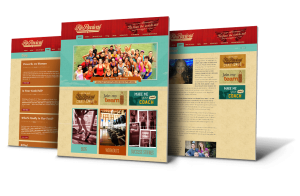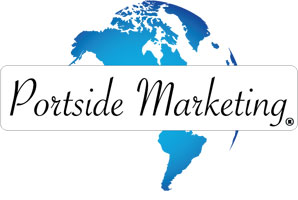Web Design Fort Worth
 Web design Fort Worth company Portside Marketing knows the Fort Worth, Texas business market. A local company can make the difference when it comes to marketing. We understand the area and factors involved with ensuring your website is seen by your target audience. We can also come to your location and sit down with you to go over strategy for your marketing projects. You can also stop by our office and meet with us there The initial design phase can be the most important aspect in your online marketing plan. When you want the best agency for web design Fort Worth, look no further than Portside Marketing.
Web design Fort Worth company Portside Marketing knows the Fort Worth, Texas business market. A local company can make the difference when it comes to marketing. We understand the area and factors involved with ensuring your website is seen by your target audience. We can also come to your location and sit down with you to go over strategy for your marketing projects. You can also stop by our office and meet with us there The initial design phase can be the most important aspect in your online marketing plan. When you want the best agency for web design Fort Worth, look no further than Portside Marketing.
Considerations for Web Design Fort Worth
When it comes to creating a custom web design Fort Worth is unique. Here are some things you should ask when you consider designing a new website or modifying an existing one:
- Who is the target audience?
- What style will resonate with that audience?
- Does your current website fit the bill?
- Does the website need a complete overhaul?
- What type of site do you want (brochure, shopping, or other)?
- Do you plan on accepting online payments?
- Are you currently being found in the search engines?
- If not, would you like to be?
- What is your initial budget?
- What is your monthly budget?
These are not the only questions but are some of the basics that need to be answered before or during the process. In creating a web design Fort Worth customers can count on us to work with you to answer these questions and more.
Effective Websites Convert
Building a website is not just about how it looks. It is important to ensure that the website converts. This means simply that the website should achieve the goals it was created for. In the case of online shopping sites, this would be a sale. For brochure-style sites, this may mean the user has found the information needed to take action, such as call your business for more information.
Fort Worth Website Design Goals
Most people, when asked, want to make more money, convert more customers into sales and land bigger accounts. A website can be a large part of the success or failure of a business. Here are some design goals many customers look to provide when building a new website.
- Provide valuable information for buyers (so they can make buying decisions)
- Create a resource area for customers with documents or media
- Have an online payment system to allow paying of bills
- Create an online store that sells products or services
- Build a community for your specific topic
- Get found online in the search engines
- Provide training or support (video, audio or written formats)
- Create an interactive experience or total immersion
- Build an online tool or application (app – desktop or mobile)
While this list is not exhaustive, it gives a good idea of the many facets a website may entail. The first step to a successful design project is planning.
Web Design Fort Worth Design Steps
Portside Marketing is successful due to the strict processes and procedures set in place to ensure every project is executed with precision and excellence. From the initial planning phase to execution, each step is monitored and reviewed by a manager to ensure company quality and service levels are met. So what can a customer expect?
Step 1: Needs Analysis
This is often called the information phase. Understanding not only how a website will look, but also how it will function is very important. The job of the web design firm is to bring out the plan that may well be in someone’s head. Trying to visualize what others are thinking is hard. We have a system that allows us to ask questions, look at samples and get a better idea of what every client expects. This step is crucial in getting the project on track from the beginning. Some of the initial things a client will need to think about are:
- What colors should be used on the website?
- Are there any font styles preferred?
- What type of layout is ideal?
- Are there sites that can be used as examples?
- Are there any hard stops in design? (anything that is a definite NO)
- What type of navigation is preferred?
- Are there any trends that are ideal? (parallax, simple navigation, one page style)
- How many pages are estimated?
- Who will write the content? (copy writing is available at an additional cost)
- What’s the purpose of this website?
- Who’s the target audience?
- Who are your competitors?
- What actions do you want the visitors to take?
Client questionnaire
Portside Marketing provides a questionnaire that helps each client answer these questions and more. Once we have the information needed through the form submitted and an initial needs analysis call, a bid will be provided with costs and timelines. If a preliminary price was quoted, this phase will confirm the actual price.
Step 2: Research, ideas & vision
Once a clear understanding of the project requirements is established, the next phase is working on the idea or vision for the website. Our award-winning designers will begin establishing an idea or vision for the website. An industry analysis will be performed to better understand the competition ad see what they are doing. Brainstorming sessions begin to bring your new website into focus. Initially, layouts, colors, shapes, animation ideas and other factors will be kicked around. Once the plan forms and starts to gel, a wireframe can be built.
Step 3: The Wireframe
A wireframe is like a blueprint for the website. It builds the visual structure for the website and may include design elements, colors and other features. However, a wireframe is intended to layout where everything will go and how things will function. While we do this step “live” in an interactive scaled down website, content is NOT the focus. We will often use latin “dummy text” in this phase unless we already have content in hand. Hence, the main goal of this step is to layout the site, structure and functionality.
Typically the wireframe will have a home page and one internal page that shows colors, navigation, font styles, structure, white space and essentially, how the overall site will look and function. Once that is approved, we move on to the content phase.
Step 4: Content
This is where all the pages come to life. So, as pages are added, text is arranged and the “marketing” gets integrated so the site achieves the goals set out in Step 1. Images, icons and graphics will be created and applied. Forms will be created and added where appropriate. Videos will be integrated if being included. This is the phase where the site comes to life. At this phase, there will be no major edits to structure, only content. Once complete, we move on to testing and final approval.
Step 5: Testing & Final Approval
Once the website is ready, we test every page, functionality and feature to be sure everything is working as intended. The customer will also get to interact and test along with us. And, once the final tweaks are made and the site is approved, we go live.
Step 6: Go Live!
It’s time to show the world the new website. Going live is often the easiest step in the entire process. The DNS (domain name service) settings are configured if needed and the site gets loaded to the chosen hosting space. Within 1-48 hours, the new site will be showing to the world. After go live, the website is now in maintenance phase. From this point forward, the site will be maintained by Portside Marketing (if chosen as the hosting company). Otherwise, the site reverts to the new owner to take care of.
These steps can appear simple, however, a complete process consisting of over 100 steps ensures nothing is missed or forgotten. Each website launched follows a strict set of guidelines to achieve a stellar experience each and every time. And, more importantly, goals are accomplished smoothly and efficiently.



